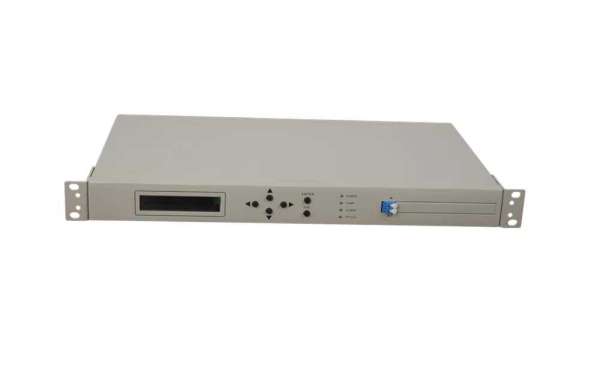1. What is SOA?
SOA (Semi-conductor Optical Amplifier) semiconductor optical amplifier is a PN junction device using a strained quantum well structure. The external forward bias voltage forms a population inversion, and the external light enters and causes stimulated radiation to form optical signal amplification.
Advantages: It supports high speed, high bandwidth, low power consumption, high gain, miniaturization, and easy integration.
Disadvantages: There are cross-gain modulation and nonlinear interactions between different wavelength channels, polarization sensitivity, and gain saturation.
Compared with EDFA (erbium-doped fiber amplifier), some indicators of commercial devices are weaker than EDFA, but SOA still has characteristics that EDFA cannot replace, such as it can support O-band (1260-1360), E-band (1360-1460), L-band (1460-1530) amplification, and has the characteristics of low cost, small size and easy integration. In the era of new infrastructure, SOA will be widely used in the access network and the edge of the metropolitan area network, as well as in the field of optical fiber sensing. .
2. SOA Market Application
With the improvement of SOA's output optical power, small signal gain, gain polarization sensitivity, and noise index, SOA will play an increasingly important role in all-optical network communication and sensor networks. In addition to satisfying the amplification of 1310 nm band, SOA can completely replace EDFA in some single-stage amplification fields of 1550 nm band.
(1) Operator optical transmission network
With the construction of 5G network, the demand for bandwidth has increased sharply. At the edge of access network and metropolitan area network, 100G (4*25G CWDM4/LWDM4) high-speed transmission is required. 5km-40km. At this time, the optimal cost solution is the 100G (4*25G) LWDM4+SOA solution, which uses 4*25G LWDM wavelength multiplexing to 100G, and then cooperates with SOA to increase the link margin.
In the 5G base station fronthaul scenario, in some scenarios where the base station is far away, the optical module type SOA can be used to increase the optical power margin, and realize the weak light transformation of the 25G signal rate of the 1310 nm band and 1550 nm band of the base station . Similarly, as home broadband is gradually upgraded to the WDMPON solution, SOA can facilitate the widespread deployment of WDM PON and improve the coverage and transmission distance of the WDM PON network.
In the application of the carrier network, the SOA can be integrated into the ROSA or TOSA of the optical module, or an independent SOA device or SOA optical module can be used for amplification.
(2) Spectral amplification of network monitoring
At present, with the rapid development of data services, the demand for data distribution monitoring in China is gradually increasing. It is usually carried out at the core network node for optical splitting monitoring. The signal from optical splitting is usually very weak and requires the use of optical amplifiers. Many 100G services have 1310 wavelengths. , can only be amplified by SOA. This scenario is currently the most widely used and mature application of SOA amplification.
(3) Data Center Interconnect DCI
With the development of big data, the demand for high-bandwidth interconnection between data centers is gradually increasing. For high-speed services, because SOA can be used for optical signal relay amplification, the optical power margin of the link is improved and the transmission distance is extended. SOA can be applied to both 1310 band and 1550 band for high-speed service optical signal amplification.
This market usually uses independent SOA semiconductor optical amplification rack-mounted equipment. Recently, Jianhebafang has launched uSOA in the form of CFP2, and is currently developing SOA in the form of QSFP28 and SFP.
(4) Applications in distributed optical fiber sensing and laser radar systems
SOA has excellent frequency response characteristics and high extinction ratio, and can be used as an optical switch or modulator. With the continuous improvement of SOA technology, it can replace the acousto-optic modulator AOM in most scenarios of fiber optic sensing to obtain narrow pulse laser with high extinction ratio.
In recent years, with the rapid development of intelligent traffic automatic driving and vehicle-road coordination, lidar has been widely used in both vehicle-mounted and roadside military. Due to the miniaturization and high gain of SOA, it can be applied to laser radar to obtain narrow linewidth laser and increase optical power, especially the optical chip laser radar of the next generation of local FMCW technology, which is a wider application of SOA in the future. field.








